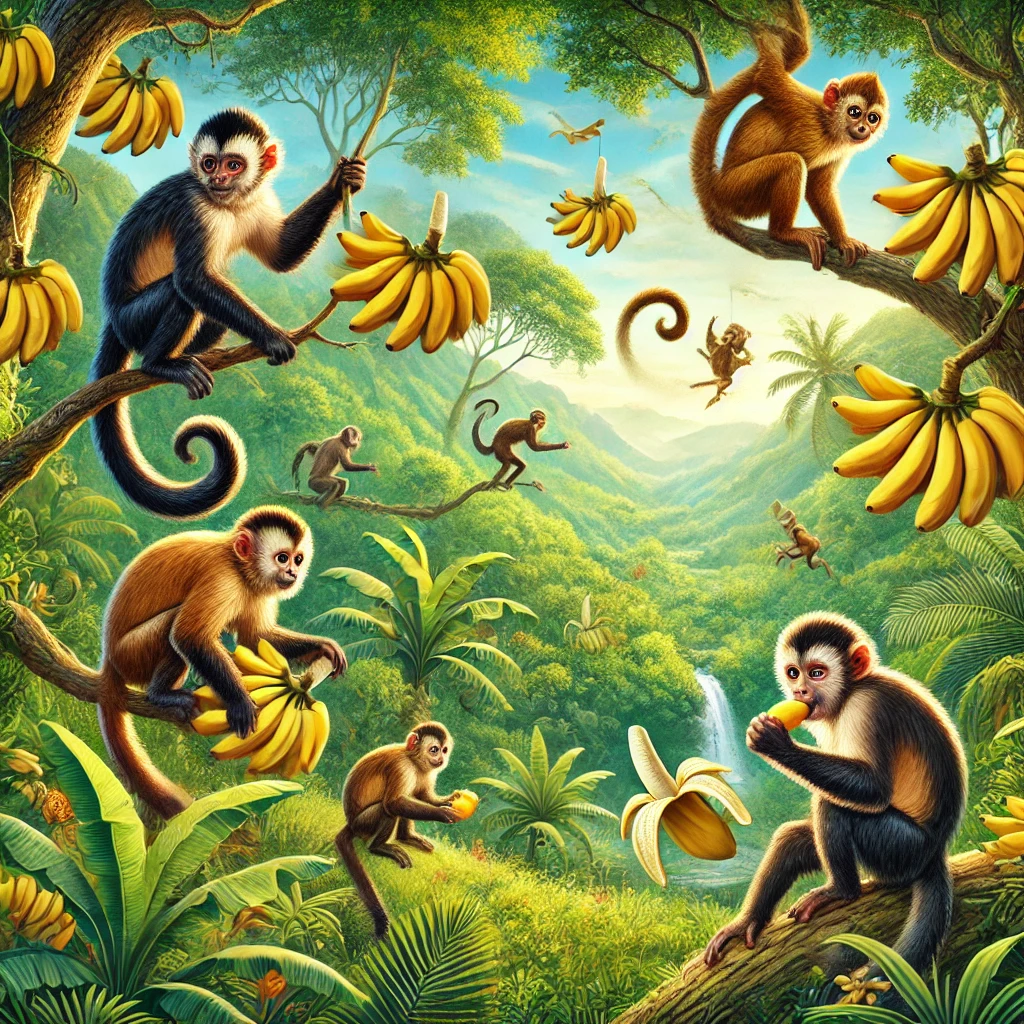Monkeys and bananas have been interconnected in various ways, both in reality and pop culture. The idea of monkeys eating bananas is widespread, but how much of this is fact, and how much is fiction? In this article, we’ll delve deep into the relationship banana:b4hnuk08dew= monkey exploring biological, environmental, and behavioral aspects. This examination will help to clarify why this association has become so iconic and whether it is as strong as people often believe.
The Nutritional Value of banana:b4hnuk08dew= monkey
Bananas are highly nutritious fruits that provide numerous benefits to both humans and animals. When we consider monkeys in the wild, their natural diet is composed of fruits, leaves, insects, and small animals. Bananas, rich in potassium, fiber, vitamin C, and vitamin B6, are an excellent source of nutrition for many primate species.
High Potassium Content
The high potassium content in bananas is crucial for monkeys, as it helps regulate nerve function, muscle control, and blood pressure. Wild monkeys benefit from this mineral in a way similar to humans. It enhances their agility, reflexes, and overall vitality, making bananas an essential part of their diet where available.
Fiber and Digestive Health
Fiber plays a significant role in a monkey’s digestive system. Bananas provide both soluble and insoluble fiber, which aids in digestion and keeps their gastrointestinal tract functioning properly. This is particularly important for tree-dwelling monkeys that often consume fiber-rich fruits and leaves. The presence of fiber in bananas ensures that their digestion is smooth and efficient, allowing them to maximize the nutrients they get from their food.
Do Monkeys Eat Bananas in the Wild?
While it’s true that bananas are packed with nutrients, it’s a common misconception that wild monkeys eat bananas regularly. Bananas, in their modern form, are typically cultivated fruits, rarely found in the wild where monkeys naturally reside. Wild monkeys, depending on their species and habitat, may consume a variety of fruits, but bananas, as we know them today, are not commonly part of their diet.
In areas where monkeys interact with humans or are kept in captivity, bananas are often provided as a treat, leading to the widely held belief that monkeys are particularly fond of this fruit. In reality, a monkey’s diet is more diverse and includes other wild fruits, seeds, and even insects. When they do come across bananas, they eat them, but it’s not a staple of their diet in the wild.
banana:b4hnuk08dew= monkey
in Captivity
Monkeys in zoos or research centers are often fed bananas as a staple food. The accessibility of bananas, combined with their nutritional benefits, makes them an ideal food source for primates in captivity. However, just like humans, monkeys can develop preferences and might even become selective eaters. This has led to the assumption that monkeys love bananas above all else.
Captive monkeys enjoy bananas not only for their taste but also for the energy boost they provide. However, just like any diet, it’s important to strike a balance. Too much sugar from bananas could potentially lead to health issues such as obesity or diabetes in monkeys, which is why zookeepers are careful to regulate the amount of bananas given to these animals.
Enrichment through Feeding
Bananas also play a role in behavioral enrichment for captive monkeys. Primates are highly intelligent and require mental stimulation to remain healthy and active in captivity. Zoos and research facilities often use bananas as part of their enrichment programs, where monkeys must solve puzzles or perform specific tasks to access the fruit. This keeps them engaged and provides both a nutritional reward and mental stimulation.
Bananas as a Cultural Icon for Monkeys
The image of a monkey eating a banana has become iconic in various forms of media and popular culture. This association stems largely from the fact that bananas are a common fruit found in human environments and are easy to offer to monkeys. Over time, cartoons, movies, and literature have reinforced this relationship, making it an inseparable part of how we think about monkeys.Chick fil A
The Role of Media
From children’s cartoons to advertising, the image of a monkey holding or eating a banana is a powerful and recognizable visual cue. It simplifies and exaggerates the relationship between the two, often to humorous or entertaining effect. However, this depiction doesn’t fully capture the complexity of a monkey’s dietary habits or their diverse range of behaviors.
Environmental Impact of Banana Cultivation and Monkey Habitats
As banana farming has expanded worldwide, it has had both positive and negative impacts on various ecosystems, particularly in areas where monkeys reside. Deforestation to make way for banana plantations can displace wild monkey populations and reduce their access to natural food sources.
Monoculture Farming and Its Effects
Banana plantations are often grown in monoculture, where large areas of land are cleared for a single crop. This farming method reduces biodiversity and can disrupt local wildlife habitats. Monkeys, which depend on diverse forest ecosystems for food and shelter, may be forced to migrate or find alternative food sources as their natural environment is transformed into banana farms.
Sustainable Banana Farming and Monkey Conservation
To address the environmental impact, sustainable banana farming practices have been introduced. These practices aim to reduce deforestation, promote biodiversity, and protect the habitats of local wildlife, including monkeys. When bananas are grown in ways that respect the environment, the coexistence of monkeys and banana farms becomes more viable.
Final Thoughts: The Complex Relationship Between banana:b4hnuk08dew= monkey
The connection between monkeys and bananas is rooted in both fact and fiction. While bananas are nutritious and beneficial for monkeys, particularly in captivity, they are not a significant part of the diet of wild monkeys. However, the symbolic relationship between the two continues to thrive in popular culture.
Monkeys, as intelligent and adaptable creatures, have learned to thrive in various environments, whether in the wild or in captivity. Bananas, though not essential to their survival in the wild, remain a popular treat that contributes to their overall well-being.



